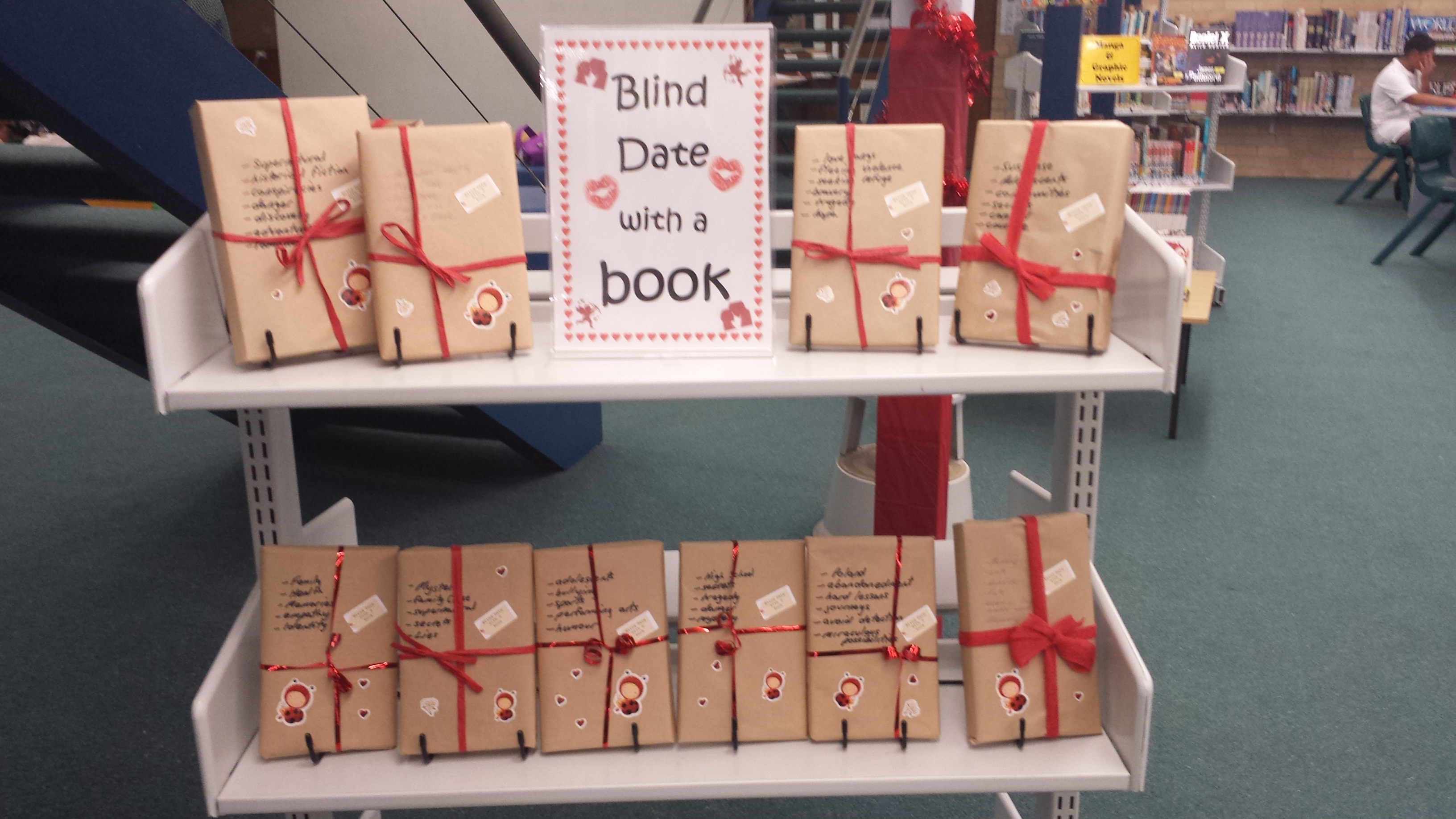Issue 101
Term 2 2017
School library spotlight: Campbelltown Performing Arts High School
SCIS speaks to Cathy Costello from Campbelltown Performing Arts High School about what’s happening in its library, including library programs and services.
What is your job title, and what does your role entail?
As a NSW Department of Education employee my job title is that of teacher librarian. I particularly appreciate that it emphasises our teaching role by putting it first. As an educator, I view my role, first and foremost, as that of a teacher. My position at Campbelltown Performing Arts High School allows me the indulgences of my two loves: I teach a junior HSIE (Human Society and its Environment) class while simultaneously fulfilling my role as teacher librarian.
I have worked in high school libraries, on and off, for more than 20 years. The teacher librarian role has been ever-changing and evolving in response to the information landscape and the information needs of the school community. Teacher librarians have recognised the need to provide students with information literacy and critical thinking skills to cope with the deluge of available information online. As information specialists, this places teacher librarians in the front line as instructional leaders of 21st-century pedagogies in schools.
What is the most rewarding aspect of working in a school library?
The answer is simple: the students. We embark on a teaching career because we love children and young people. We work hard for them, to teach them, to guide them. We try to instil in them a love of learning and a love of reading. Our reward, in return, is watching them grow into confident young adults. We are renewed by their energy, enthusiasm, and sense of humour.

What do you see as the most important part of the library’s role in the school community?
As I indicated earlier, our most important role today is developing students’ information literacy skills. We find that many students are not sophisticated users of information and cannot distinguish advertising from information sources. Information literacy involves research skills and techniques to accurately locate relevant information. The next step is to critically evaluate the information source to determine if it is credible and reliable. In the evolving information landscape, it is important students can identify ‘fake news’ in a so-called post-truth world (Andersdotter 2017).
Another important part of our role is teaching students to be safe and responsible users of information and digital media. This includes digital citizenship and respecting intellectual property. A significant aspect is instructing students on how to avoid plagiarism by teaching them how to paraphrase information and reference information sources using online citation tools.
How do you engage with your students in a digital environment?
The library has a range of digital hardware including desktop PCs, laptops, tablets, smartboard and connected classroom technology. The tool that I use most to engage with my students, however, is my website, Virtual Library (www.virtuallibrary.info), which I use in the classroom for instruction when collaboratively teaching. Students are shown how they can later revise the content of the lesson at any time by navigating back to the website. The website provides information about what is happening in the school library and how students can access our resources. It also provides information and resources on information literacy and digital citizenship, and a wide range of electronic curriculum-based materials. Students can also use the website’s contact form for help locating resources, to suggest a purchase, or to provide feedback.
Are there any current issues or challenges facing your library? How are you working to overcome them?
When I inherited the library in 2015, it had not had the stability of a trained teacher librarian for some years. We needed to significantly update some of the library collection as well as continue the process of transforming the library into a modern learning space to further engage our students.
My head teacher helped me to determine how I could best support teachers in the classroom using collaborative practices. These were discussed with faculty heads and promoted via professional conversations and emails. Staff continue to be responsive to these collaborations. To address the collection deficit, I invested in an ebook subscription; purchased carefully selected, recently published young adult fiction books; included links to e-resources on my Virtual Library website; and uploaded credible websites to our library catalogue using SCIS Special Order Files.
Most students simply want a comfortable indoor area away from the elements where they can sit and use their devices. This is perfectly OK. The success is actually getting students into the library.
How do you promote reading and literacy in your school? Are there any challenges in doing so?
Our most successful strategies, thus far, for promoting literacy in our school have been the purchasing and promotion of graphic novels and our recent ‘blind date with a book’ promotion. Graphic novels have proved by far our most popular items since their introduction in late 2015 and this is reflected in our circulation data. ‘Blind date with a book’, for those unfamiliar with it, is a mystery book wrapped in plain paper and tagged with clues. It exceeded all expectations, with the books flying off the shelves; we had real difficulty keeping up with demand. Again, the success of this promotion is reflected in our loans statistics: loans more than quadrupled compared to the same period in the previous year. And, working with English faculty teachers, we have had some success in introducing ‘speed dating with a book’ into the wide reading program for years 7–10.
Another strategy that we introduced to promote reading and literacy is the genrefication of our print fiction collection. Instead of books being shelved according to author, we rearranged and labelled our fiction books according to genre. Evidence-based research has shown that this strategy increases loan statistics because it helps students to choose a book from a genre of their choice. I plan to create displays and promotions that highlight one genre each month to promote this strategy, and I will be closely monitoring library metadata to evaluate its success.
We also promote the Premier’s Reading Challenge and strongly encourage students in years 7–9 to participate. And we undertake various other promotions and displays throughout the year to promote reading and literacy.
How do you promote an interest in STEAM areas in your school? Are there any challenges in doing so?
We are in the process of planning a makerspace for our school library in 2017. I am currently investigating a range of digital tools, such as robotics, electrical circuits and coding apps, to promote authentic learning for our students. I approach this endeavour with little more than a will to learn, which models innovative discovery for our students. I will be working closely with the STEAM teaching staff, and undertaking ongoing professional development to learn to code and gain experience using these future learning tools. From conversations with students, I have already managed to generate a lot of interest in STEAM, and have full confidence that this will be a huge hit with students at the school.
How do you encourage students to make use of the library?
This is all about a welcoming and inviting environment. Having an aesthetically appealing arrangement of both comfortable and functional furniture is a great start. Having wonderful eye-catching book displays and all the best resources is another lure. Having the latest technology is also great. If I am really honest, however, most of the students who come to the library are not there to look at my wonderful book displays or for any of the other reasons listed. They are there because they feel comfortable. It is a place to be on their own or to be with friends. Most students simply want a comfortable indoor area away from the elements where they can sit and use their devices. This is perfectly OK. The success is actually getting students into the library. Once they are there, we can begin to build a rapport with them so that we can ultimately point them in the direction of our services and resources. They may not be interested in them that day, or even that year, but these students will come to us for help at some stage in their school life and that, in itself, is a win.
What is your favourite thing about SCIS?
I could not manage my library management system (LMS) without SCIS. SCIS allows us to automatically upload metadata for each resource into our Oliver LMS, the most useful access point being SCIS Subject Headings and ScOT authority files. The role of these access points cannot be underestimated as they are one of the main ways that our library users are able to locate relevant resources.
I also love SCIS’s Special Order Files. These files provide quick and ready access to batches of records for digital resources such as recently SCIS-catalogued websites and e-resources and websites recommended in SCAN magazine and Scootle. I love the fact that our library users can have full confidence that all the websites in our library catalogue are credible and reliable sources.
I also love the reviews and the tag browser in SCIS OPAC. When genrefying our fiction collection, I made good use of SCIS reviews, tags and subject headings to determine which genre to allocate each book to. Likewise, when recently creating cryptic tags for our ‘blind date with a book’ promotion, I used SCIS subject headings, reviews and tags.
What would you like to see SCIS do more of?
I would encourage the continuation of cataloguing credible and reliable websites aligned to Australian Curriculum content. Please keep them coming as we cannot get enough of them. I have also recently discovered that SCIS offers webinar training courses; please also keep them coming, as I am sure there is still more to learn about how to best utilise our SCIS subscriptions.
References
- Andersdotter K 2017, Alternative Facts and Fake News — Verifiability in the Information Society, International Federation of Library Associations and Institutions, Library Policy and Advocacy Blog, http://blogs.ifla.org/lpa/2017/01/27/alternative-facts-and-fake-news-verifiability-in-the-information-society
Image credits
- Photo supplied by Campbelltown Performing Arts High School.
